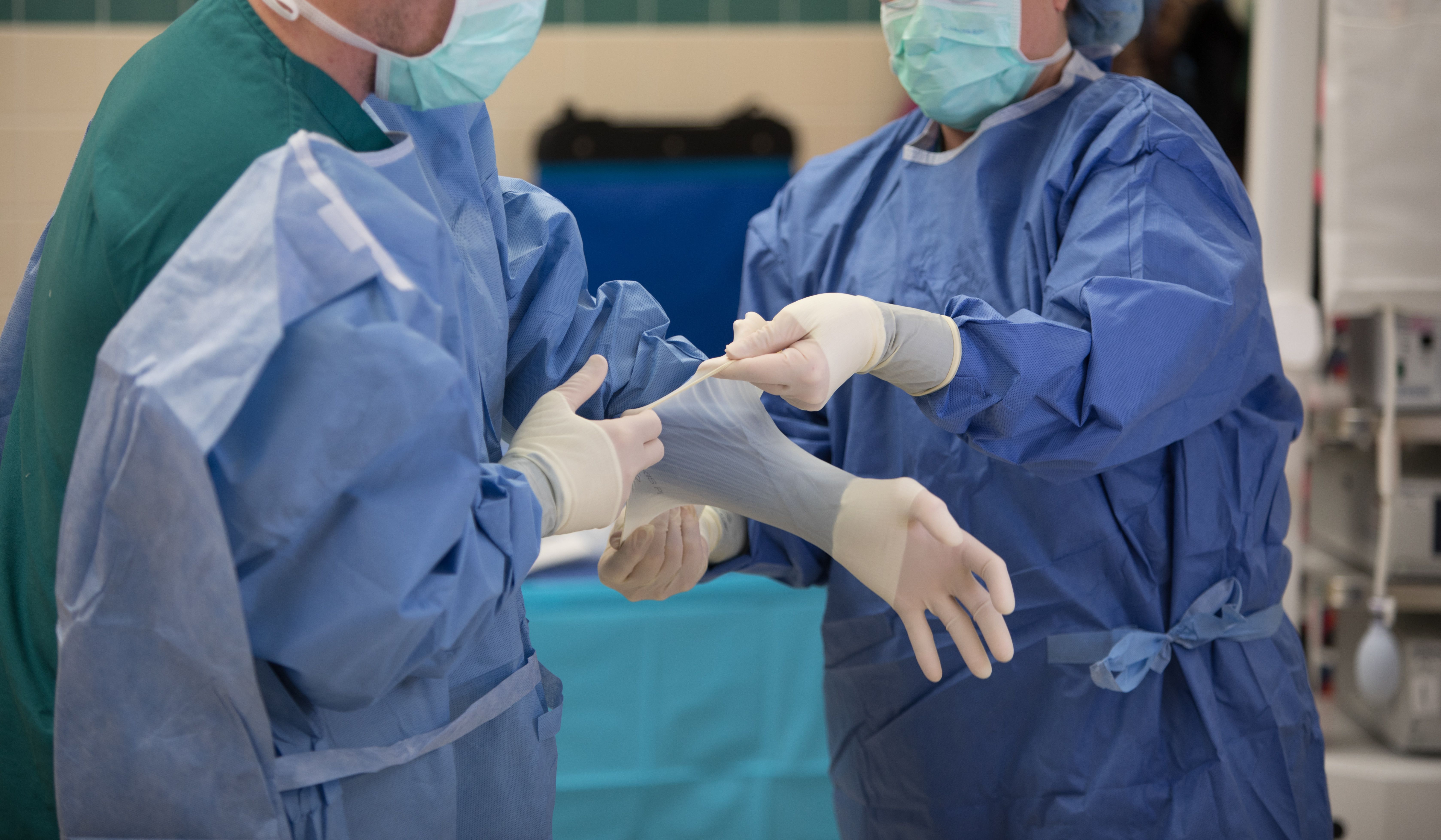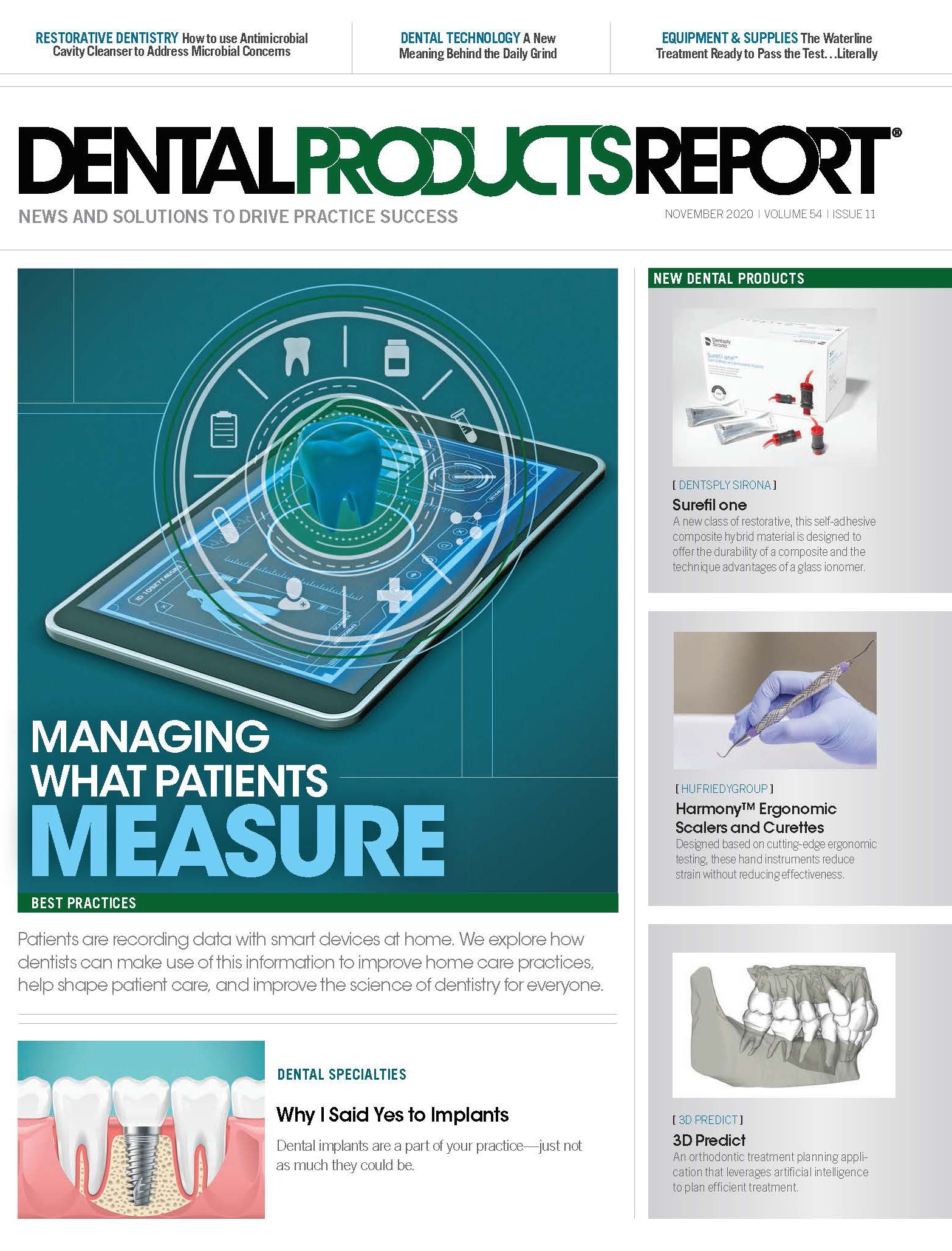Beating the heat
The pandemic has brought a slew of new infection control guidance but staying comfortable can be difficult. Here are some ways to stay comfortable and still adhere to PPE guidelines.

The acronym PPE, meaning personal protective equipment, is nothing new to dental health care professionals, and since the pandemic, it’s an acronym that most laypeople now understand. Since PPE has become more important, it has also become more unpleasant. Between gowns, face shields, and masks (sometimes both a respirator and a mask at the same time), it can be hot and uncomfortable for team members.
But that doesn’t mean the team has to suffer in silence. There are tips to make wearing PPE less unpleasant.
Wiggle Room
There are plenty of PPE rules from regulatory bodies, but team members still have some latitude to make themselves more comfortable.
“Obviously, you have to follow what OSHA and the CDC and your state boards say, but there are definitely heavier versus lighter options that you can look into,” says Lisa Kane, DMD, dental consultant at Dental Office Compliance of New England. “Everything has to be long sleeve. It has to be up high. Ideally, it should cover your thighs. But something that there’s no regulation on is what you wear underneath your PPE. As long as your gown isn’t sheer, you could wear a tank top underneath it. You don’t have to wear something heavy underneath. People like to have a lot of layers on underneath. Maybe they had scrubs and a T-shirt, or some people were wearing lab coats under their gowns. If you get hot, wearing a gown with something lightweight underneath, versus multiple layers is going to really help.”
Another consideration for a cooler option is the PPE material type.
“There’s some misunderstanding about what kind of fabric that the gowns are made out of,” says Mary Govoni, infection prevention speaker, author, and consultant. “Many people believe that they have to be waterproof, which makes them heavier and hotter. For dentistry, they just simply need to be fluid-resistant. And so if they read the descriptions of gowns and fabrics, fluid-resistant means that any droplets won’t soak through the fabric. If it’s waterproof, and you sprayed water on it, it would just run right off. That’s heavier and much warmer, much more uncomfortable.”
Environmental Controls
An easy way to mitigate the heat is by turning down the thermostat and keeping the office cooler. But, while that will help team members stay cool, patients may find themselves a little too cold.
“They’re going to have to adjust the temperature on the thermostats in the office,” says Govoni. “That may make it uncomfortable for patients, but they can always have blankets to help cover them. But, then those have to be laundered after every patient because they can be contaminated from spatter and splatter. They also can communicate to patients ahead of time that, ‘Because we’re wearing all of this PPE, we’re keeping the temperature cooler, so dress warmly when you come in.’”
Another tool that offices may try is using fans to circulate air. However, that is a double-edged sword. While fans can keep the office nice and crisp, it also circulates air in a less than desirable fashion.
“They have to be careful where they position the fans because what you don’t want to do is position the fan so that it’s blowing the potential aerosols from the room out into a hallway,” says Govoni. “And you don’t want the fans blowing from the patient toward the team members. Fans need to be placed behind the patient. They’ve got to be towards the patient’s feet to draw the air away from the patient.”
One technology that has gained wider adoption since the pandemic has been air purification systems. It is another area that may give some relief from the heat.
“Fans really are not the best option, because we don’t know where we’re circulating all that air,” says Govoni. “The best option, really, is air purification. CDC’s interim guidance is pretty specific about what types of things to do. It’s becoming very common that practices are putting these HEPA filtration units in each treatment room and trying to mitigate the aerosols. By running those all the time, it does tend to cool the air down.”
Taking Breaks
Team members are also encouraged to take breaks throughout the day, both planned and as necessary. Those breaks can help team members from becoming overwhelmed. The key to this is to have a management team that understands and supports the necessity of taking breaks. In some cases, that may mean that the schedule won’t be as full as they might like.
“Taking breaks is sort of an unknown entity in dental practices because the tendency for scheduling is that we just have patients back-to-back-to-back-to-back, especially when some practices are wanting to make up for lost time when they were closed,” says Govoni. “The CDC has clearly said that the schedule should be adjusted to allow a little bit more time in between patients so that we don’t have so many patients in the office all at one time,” she continues.
According to Govoni, breaks are so important. “There are even some practices that don’t even take lunch breaks. They just work through their day straight, as a productivity tool, but they really do need breaks. Practices need to sit down and talk about that,” she says.
Dr Kane echoes that sentiment. “I’ve been in offices where people just don’t feel well because they’re wearing their mask all day and not taking them off,” she says. “But you should offer them, ‘While everyone’s letting their disinfectant sit, go outside, take your mask off, get some air, drink something.’ The concern is learning how to put your mask on in an aseptic manner. You don’t want to be doing that and infecting yourself. You want to be careful about how you’re handling dirty PPE, used PPE, but once you’ve mastered that, I think it’s really important to take breaks and make sure that you take a lunch break.”
Respirators
N95 respirators are more critical to dental office safety than ever before, but these pieces of protective equipment come with their own usage concerns.
“They [dental health providers] don’t need to keep that respirator on all day long,” Govoni advises. “Once they leave the treatment room, they’re still supposed to wear a face mask, so they can put on a surgical mask if they’re, maybe, working up in the business office or they’re going into a break room or something. And the CDC guidance even says they could wear a cloth face covering when they’re not doing patient procedures, and that will help them cool down a bit as well if that N95 respirator makes some hot.”
If an N95 respirator is too stifling, there are other options that can be explored.
“There are a couple of other respirators,” says Govoni. “One is from CROSSTEX that looks much like a surgical mask, but it’s actually an N95 respirator. And Halyard Health also has a non-molded mask. It’s a softer type of N95 respirator that isn’t as warm, doesn’t feel as confining, yet it meets all the requirements to be a respirator.”
Some practices utilize double-masking, that is, wearing a mask over a respirator to extend the life of the hard-to-find respirators. But that practice can be fine-tuned.
“You evaluate that,” Dr Kane advises. “If you feel like you need to double-mask to somehow protect it, I would only use a Level 1 mask. There’s so much layering that it makes it harder to breathe through that. Do you really need that? If you’re wearing a face shield, are you actually getting a ton of splatter on there? Test it and see if you really need all those layers.”
Face Shields
Face shields are not novelties in dental practices. However, due to the pandemic, they are more ubiquitous than ever. But that additional protection comes with a trade-off such as a lack of comfort and, perhaps, a sense of claustrophobia. Like other types of PPE, team members have options.
“There certainly are a gazillion styles of face shields out there right now on the market because that is what OSHA and the CDC are recommending,” says Govoni. “That’s for two reasons, to protect the eyes, but also to protect from spatter and splatter, and it helps to prevent droplet contamination on the mask. So, the face shield doesn’t have to be worn all the time in the office, just when they’re doing patient treatment. And you look for ones that have a lightweight attachment around the head. Some of them have just some lightweight foam that helps them seal up against the forehead and they have some elastic that helps them to fit a little better at the top. But then you have to weigh that with the challenge of, ‘am I going to wear loupes and a light and do I need to look at a different style to accommodate my loupes and my light when I’m working?’”
It’s important to remember that not just any face shield is appropriate for a health care setting. Whatever the equipment, it has to be National Institute of Occupational Safety and Health (NIOSH)-approved and cleared by the FDA for a dental setting.
“The real kicker with any of these devices that people are looking at or hearing about in webinars, is that they have to make sure that they have NIOSH and Food and Drug Administration clearance, even an emergency use authorization through the Food and Drug Administration,” says Govoni. “And I haven’t seen that for some of these devices. So, I know everybody’s looking for any port in a storm right now, but you’ve got to be careful that you don’t put yourself at risk by using something that isn’t proven, that doesn’t have some kind of scrutiny to make sure it actually works.”
It is true that extra layers of PPE can be restrictive, claustrophobia-inducing, and uncomfortable, but while it is useful to find ways to mitigate the physical constraints of such equipment, Govoni advises dental health care personnel to try and make whatever peace with the new requirements that they can, because it’s probably here to stay.
“If the team members have the attitude that, ‘this is what I need to do to protect myself and to keep my patients safe,’ then it’s establishing a new habit,” says Govoni. “And once they do, it’ll be just second nature. The same thing happened when we first started wearing face masks and gloves back in the HIV/AIDS epidemic. We all said, ‘oh my gosh, I can’t do this. I can’t stand it.’ And now, most people wouldn’t think about sitting down to see a dental patient without gloves and a face mask. So it’s all in what we get used to.”
